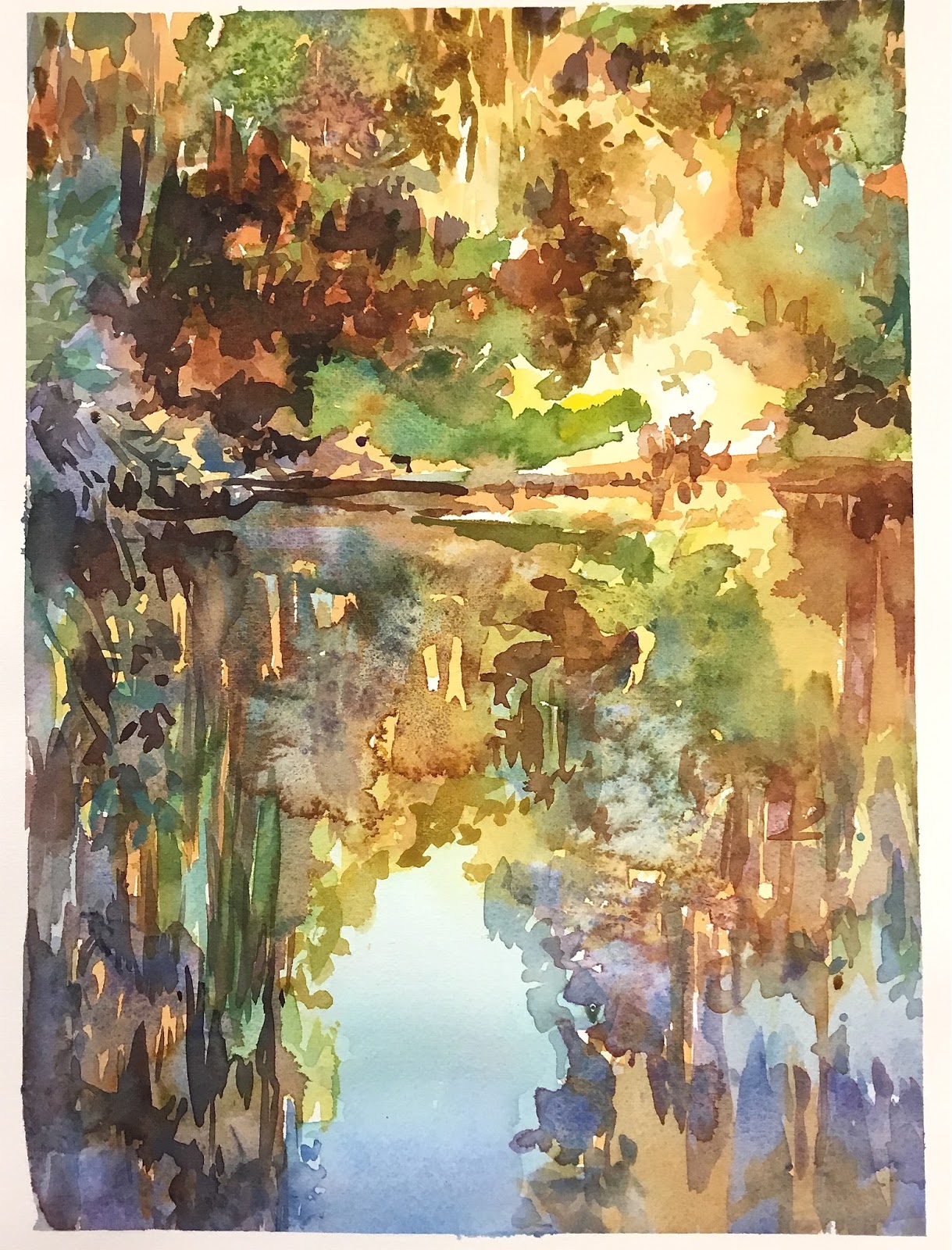Of course the sketch can be a good start. I have another approach with out the sketch but this can be scary for beginners.
Monday, May 29, 2017
The Humble Coffee Mug
For beginners, after I run through the basics of color wheels and value scales etc. I like to do a coffee mug, something close to home! The elipses, the reflections, the neutrals and gray scales are all there. The rich coffee color can be more colorful than people realize. Here is a demo I recently did too illustrate that point.
Of course the sketch can be a good start. I have another approach with out the sketch but this can be scary for beginners.
Of course the sketch can be a good start. I have another approach with out the sketch but this can be scary for beginners.
Poetic Bird Study
Artists often like to render the bird very accurately like a Basil Ede,
or Audubon, but there is a place for a looser interpretation of the magnificent bird,
without obsessing over every single detail, which can tend to leave the painting
looking a bit stiff.
This watercolor demo was done at Reddi Arts from a photo my sister in law took at a nearby pond.
In this case I started with the drawing, just the necessary clues, keeping it light, use a kneaded eraser for erasing.
1. I start laying in preliminary washes in the lightest areas building detail slowly.
2. Watch out for the birds legs they can get too big or too small easily. Egret legs are gangley and it doesn't take much to make them look worse!
3. Build detail slowly with light glazes alternating purples and blues for interesting combinations.
4. Once I have most of the bird structure worked out I move to the background, again,
working the lightest grasses and pond muck in neutrals first.
7. I try to keep the water shadow reflection multicolored by keeping it as one unit, one color bleeding into another. Then I added salt. Foreground can have just enough detail to get the point across.
Enjoy the closeup !
or Audubon, but there is a place for a looser interpretation of the magnificent bird,
without obsessing over every single detail, which can tend to leave the painting
looking a bit stiff.
In this case I started with the drawing, just the necessary clues, keeping it light, use a kneaded eraser for erasing.
1. I start laying in preliminary washes in the lightest areas building detail slowly.
2. Watch out for the birds legs they can get too big or too small easily. Egret legs are gangley and it doesn't take much to make them look worse!
3. Build detail slowly with light glazes alternating purples and blues for interesting combinations.
4. Once I have most of the bird structure worked out I move to the background, again,
working the lightest grasses and pond muck in neutrals first.
5. Start adding greens lightest first moving to dark colors last, allowing
wicking to happen on it's own. Let the water do the work! My Mantra!
6. I find it's best to do the dark colors carefully , less is usually more in areas such as grasses. Drawing every blade of grass should only be done if you want to do an Audubon style rendering.
A halfway rendered clump of grass can just look uncommitted, go a little abstract there, since
the bird is the focal point. I did the background in the upper area in deep purples and added salt.
Enjoy the closeup !
Taking on Complexity
1. Start the lightest yellows first, then build the range of greens into the wet washes to get the wicking effects to add texture.
2. Build detail slowly with varieties of fun color mixes, still maintaining the wicking approach to get extra "on the paper color mixes".
3. Work your way to the cooler color mixes in the picture, purples and greens etc.
4. Keep moving into the cools getting bluer and purple mixes
5. Add salt into rich wet color mixes (kosher coarse grain works for me)
6. After the salt water dries, brush salt off with a palette knife gently, and add details if necessary:

Subscribe to:
Posts (Atom)
Todays Wednesday Custom Art Lessons
Here are some students engaged each on their own paintings, I help each one at their unique level. Each of my students are amazing creative...

-
Here are some students engaged each on their own paintings, I help each one at their unique level. Each of my students are amazing creative...
-
I offer painting lessons to small groups in my private studio located near San Marco. Here, you will learn the basics of abstract and rep...






















